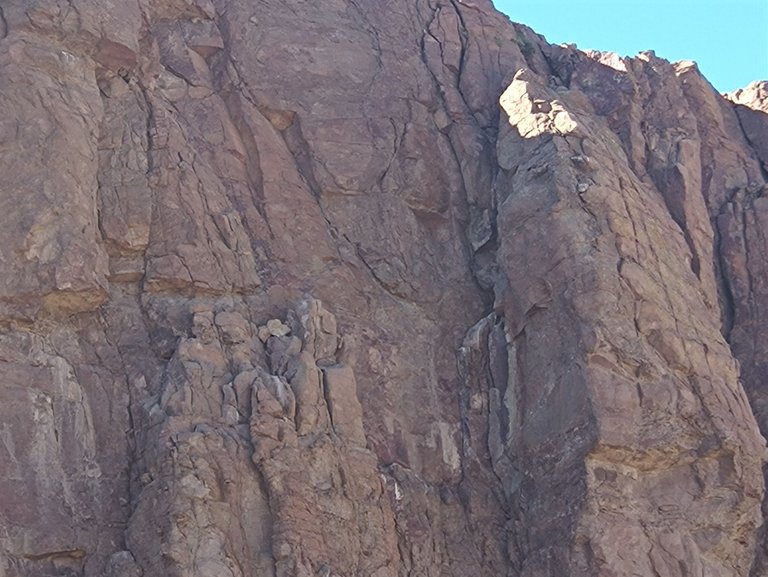
On our fantastic tour of La Caldera, we discover unique features of a large area spanning some 25 kilometers in circumference, a site that witnessed a mega volcanic eruption many millions of years ago.
I have already talked a bit about the amazing landscapes, the rocks, and the existing flora in all its extension, I still need to talk a bit about the fauna, it is what I am going to describe next.
I must start by mentioning a tremendous mistake, I forgot my digital camera in a backpack that I did not take with me to the tour, so I do not have super definition photographs and with a close-up that only a good telephoto lens can give. I was only able to capture a few through my phone's lens. I'm sorry, but that also gives me a perfect excuse to go back there another time.
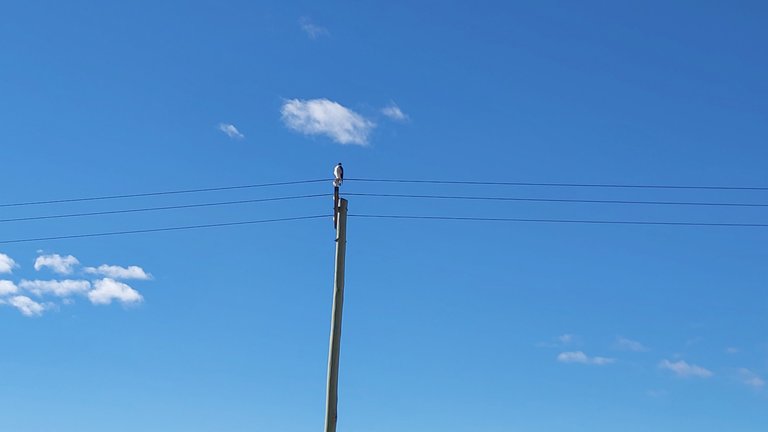
Within the abundant fauna, the native birds stand out, such as loppers, pigeons from the mountains, bandurritas, black yales, coluditos, and tucúqueres, as well as several birds of prey such as the ñanco (whose photograph on a power line pole accompanies the note), eagle, peregrine and the red falcon and Cory's hawk. A large bird is a rhea, belonging to the same family as the ostrich in Africa and the emu in Australia.
A nice rodent caught our attention for two reasons, the first that we could see in action and the second that it is quite large, its length from the end of the tail to the tip of the nose usually measures more than 80 centimeters. The guide had mentioned to us that he prefers rock formations with straight and high walls, he is perfectly adapted to that environment where he moves with amazing ease and speed. We were able to observe some, although their nocturnal habits played against us since we passed by the chosen place to observe them just afternoon.
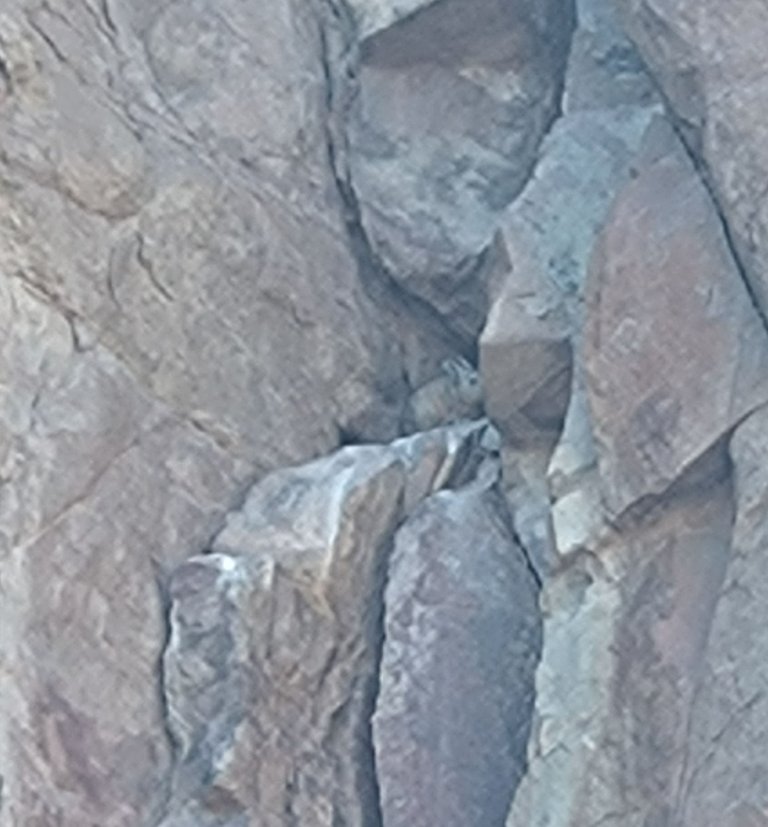
There is a rather poorly defined photograph that shows one perched on a rock ledge. Excuse me, since the phone's zoom is only digital, it brings the lens closer, but it loses definition. If you pay a little attention and imagination, you will be able to see it.
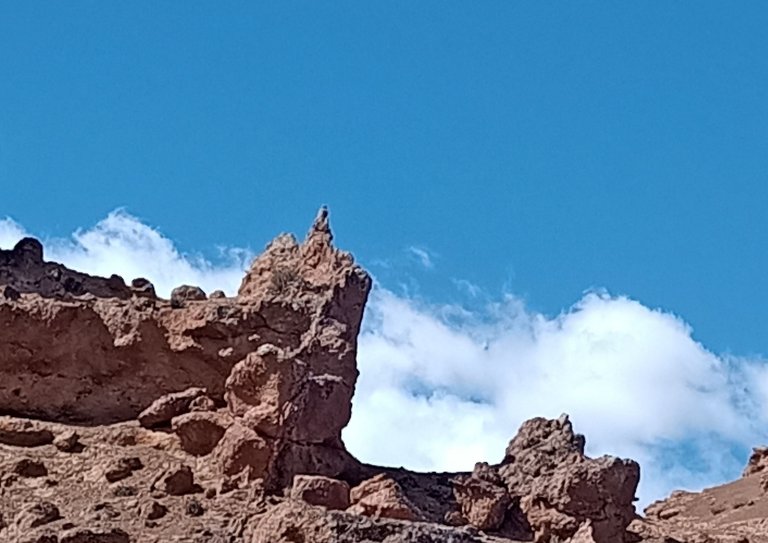
Among the largest is the guanaco, a herbivorous and gregarious camelid and its biggest predator, the fearsome Puma or little lion as the locals often call it, it is a large feline that lives throughout America from Alaska to these very southern places. In addition to the guanaco, it usually attacks cattle, which is why it is not friendly to the stallholders and gauchos who hunt it whenever they can.
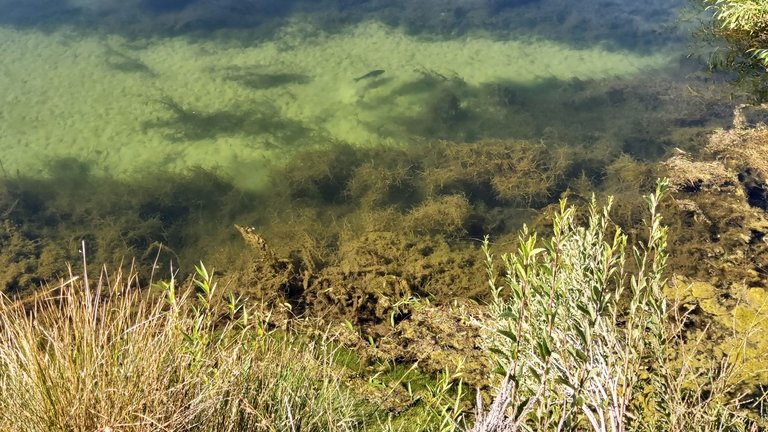
Other smaller animals such as the red fox and the gray fox, the nice piche and furry, both of the armadillo family. Of course, many reptiles, among which lizards and geckos stand out, as well as some snakes.
As a fisherman, I cannot fail to mention the salmonids that, despite not being native, have adapted perfectly to the cold, crystal-clear waters. Also some other fish, these if they originate in the region, populate the waters of the lakes, rivers, and streams, among them we can mention the perch, the Patagonian pejerrey, the small and large puyén, and the torrent catfish.
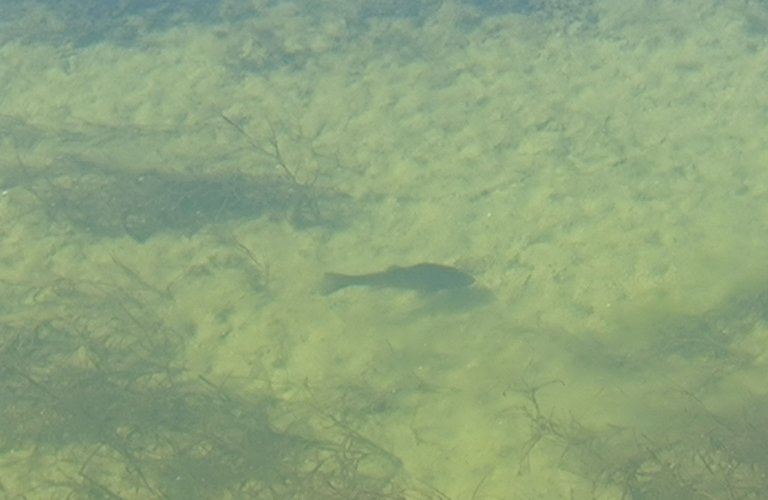
Of a large amount of fauna, we were only able to observe a few, but just like forgetting about the camera, it is one more excuse to return at another time, soon.

En nuestra fantástica excursión por La Caldera, descubrimos características únicas de una gran superficie que abarca unos 25 kilómetros de circunferencia, lugar que fue testigo de una mega erupción volcánica muchos millones de años atrás.
Ya he hablado un poco de los alucinantes paisajes, de las rocas y de la flora existente en toda su extensión, me falta hablar un poco sobre la fauna, es lo que voy a describir a continuación.
Debo comenzar mencionando un tremendo error, olvidé mi cámara digital en una mochila que no llevé conmigo al recorrido por lo que no tengo fotografías de super definición y con un acercamiento que solo un buen teleobjetivo puede dar. Solo pude capturar algunas pocas a través de la lente de mi teléfono. Lo lamento, pero eso también me da una excusa perfecta para volver allí en otro momento.
Dentro de la abundante fauna sobresalen las aves autóctonas tales como cortarramas, palomas de la cordillera, bandurritas, yales negros, coluditos y tucúqueres, también varias aves rapaces como el ñanco (cuya fotografía sobre un palo del tendido eléctrico acompaña la nota), águila mora, halcón peregrino y colorado y gavilán ceniciento. Un ave de gran tamaño es el choique, perteneciente a la misma familia del avestruz de África y el emú de Australia.
Un simpático roedor llamó nuestra atención por dos motivos, el primero que pudimos verlo en acción y el segundo que es bastante grande, su longitud desde el extremo de la cola hasta la punta de la nariz suele medir más de 80 centímetros. El guía nos había mencionado que prefiere las formaciones rocosas de paredes rectas y elevadas, está perfectamente adaptado a ese entorno donde se desplaza con asombrosa facilidad y rapidez. Pudimos observar algunos, aunque sus hábitos nocturnos jugaron en nuestra contra ya que pasamos por el lugar elegido para observarlos apenas pasado el mediodía.
Hay una fotografía con bastante mala definición que muestra uno trepado en una saliente de las rocas, sepan disculparme ya que el zoom del teléfono es solamente digital, acerca el objetivo, pero pierde definición, si ponen algo de atención e imaginación podrán verlo.
Dentro de los más grandes se encuentra el guanaco, un camélido herbívoro y gregario y su mayor predador, el temible Puma o leoncito como suelen llamarlo los lugareños, es un felino de grandes dimensiones que habita en toda América desde Alaska hasta estos lugares tan australes. Además del guanaco suele atacar al ganado por lo cual no le resulta simpático a los puesteros y gauchos que lo cazan cada vez que pueden.
Otros animales de menor porte como el zorro colorado y el zorro gris, los simpáticos piche y peludo, ambos de la familia de los armadillos. Por supuesto muchos reptiles entre los que se destacan lagartos y lagartijas y también algunas serpientes.
Siendo pescador no puedo dejar de mencionar los salmónidos que pese a no ser autóctonos se han adaptado perfectamente a las aguas frías y cristalinas. También algunos otros peces, estos si originarios de la región, pueblan las aguas de los lagos, ríos y arroyos, entre ellos podemos mencionar la perca, el pejerrey patagónico, el puyén chico y grande y el bagre de los torrentes.
De la gran cantidad de fauna solo pudimos observar algunos pocos, pero al igual que el olvido de la cámara, es una excusa más para volver en otro momento, pronto.
Las fotografías son de mi propiedad excepto las que menciono la fuente.
The photographs are my property except those mentioned by the source.
Héctor Gugliermo
@hosgug